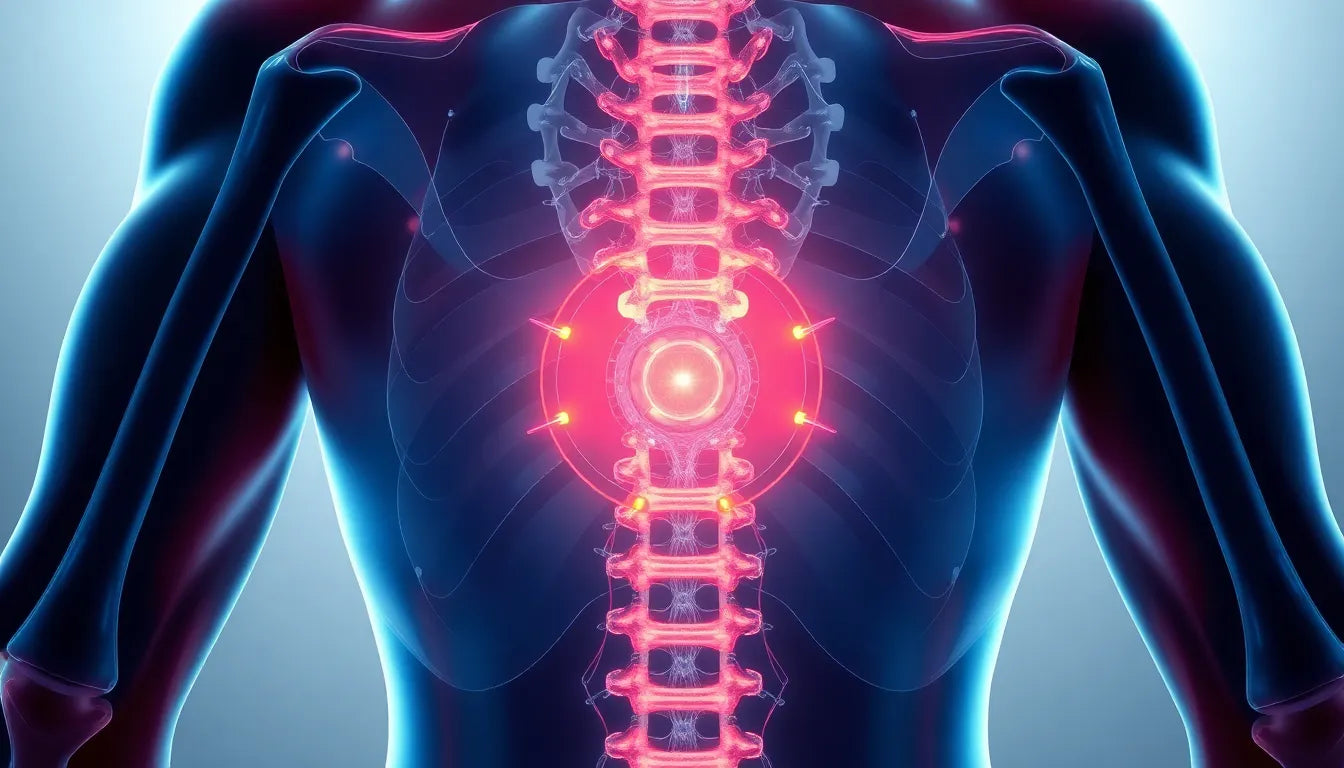Sciatica is a condition that plagues countless individuals, characterized by pain that radiates along the path of the sciatic nerve, which extends from the lower back through the hips and down each leg. This pain can range from mild discomfort to severe, debilitating agony, often making everyday activities a challenge. For those dealing with sciatica, finding effective solutions to manage and alleviate this discomfort is crucial. Traditional methods such as medication or physical therapy can provide relief, but they are not always sufficient or suitable for everyone. This is where innovative solutions like the sciatica belt come into play.
Introducing the sciatica belt
The sciatica belt is gaining popularity as a non-invasive, supportive option for managing sciatica symptoms. This specialized belt is designed to provide targeted support and stabilization to the lower back, hips, and pelvis, helping to reduce the pressure on the sciatic nerve. By offering a practical and accessible means of pain management, the sciatica belt is becoming a preferred choice for many seeking relief from the relentless discomfort of sciatica.
Unlike other supportive devices, the sciatica belt focuses on stabilizing the sacroiliac joint (SIJ), which plays a crucial role in maintaining proper alignment and function of the lower back and pelvis. By doing so, it not only alleviates pain but also promotes better posture and spinal alignment, which are essential for long-term recovery and preventing further injury. The growing popularity of sciatica belts is a testament to their effectiveness in providing relief and improving the quality of life for those affected by sciatica.
Setting the stage for further exploration
As we delve deeper into the world of sciatica belts, it's important to understand how they work and the benefits they offer compared to other supportive devices. In the following sections, we will explore the mechanics behind sciatica belts, discuss their benefits, and compare them to other options like lumbar orthoses. By doing so, we aim to provide a comprehensive understanding of why a sciatica belt might be the ultimate solution for those seeking relief from sciatica pain.
how sciatica belts work
Sciatica belts are ingeniously designed to provide targeted support and stabilization, particularly focusing on the sacroiliac joint (SIJ). This joint, located where the spine meets the pelvis, plays a pivotal role in maintaining proper alignment and function of the lower back and pelvis. By stabilizing the SIJ, sciatica belts help reduce the pressure exerted on the sciatic nerve, thereby alleviating pain and discomfort.
One of the standout features of many sciatica belts is their dual-layer design. For instance, the Serola Sacroiliac Belt incorporates both a non-elastic layer for rigid support and an elastic layer for compression. This combination ensures that the belt not only provides firm support to the lower back but also allows for some degree of flexibility and movement, enhancing comfort and effectiveness. The non-elastic layer mimics the function of ligaments, offering stability, while the elastic layer applies gentle compression, promoting circulation and reducing inflammation.
benefits of using a sciatica belt
pain relief
Sciatica belts are highly effective in alleviating pain by reducing the pressure on the sciatic nerve. By stabilizing the spine and pelvis, these belts help to prevent unnecessary movement that could exacerbate pain. This targeted approach to pain management allows users to experience relief without the need for invasive procedures or medications.
improved posture and spinal alignment
In addition to pain relief, sciatica belts play a crucial role in promoting better posture and spinal alignment. By supporting the lower back and pelvis, these belts encourage proper posture, which can prevent further injury and aid in long-term recovery. Improved alignment not only reduces pain but also enhances overall mobility and functionality.
user satisfaction
Sciatica belts consistently receive high marks for user satisfaction, particularly when compared to other supportive devices like lumbar orthoses. Research shows that users often find sciatica belts more effective in reducing pain and disability, leading to a higher level of satisfaction. This is likely due to the targeted support they provide, which addresses the specific needs of those suffering from sciatica.
comparison with other supportive devices
When considering supportive devices for sciatica, it's important to compare the effectiveness and benefits of sciatica belts with other options, such as lumbar orthoses. While both types of devices aim to provide relief and support, they do so in different ways. Sciatica belts focus on stabilizing the sacroiliac joint, making them ideal for those whose pain is concentrated in the lower back and pelvis. In contrast, lumbar orthoses provide broader support for the entire lower back, which may be more suitable for certain conditions.
| Feature | Sciatica Belts | Lumbar Orthoses |
|---|---|---|
| Targeted Support | Sacroiliac Joint | Lower Back |
| User Satisfaction | High | Moderate |
| Effectiveness | High for SIJ-related issues | Varies |
| Comfort | High | Varies |
The choice between a sciatica belt and other supportive devices ultimately depends on individual needs and the specific nature of the sciatica pain. However, for many, the sciatica belt emerges as the preferred choice due to its targeted support, comfort, and high user satisfaction.
Maximizing the benefits of sciatica belts
Sciatica belts are not just a temporary fix for immediate pain relief; they also serve as a long-term solution to prevent future sciatica episodes. By consistently wearing a well-fitted sciatica belt, users can maintain proper posture and spinal alignment during various activities, whether sitting for extended periods or engaging in physical exercise. This versatility makes sciatica belts a valuable tool for both acute and chronic sciatica management.
For those experiencing sudden flare-ups, a sciatica belt can provide immediate support and relief, allowing them to continue daily activities with minimal disruption. Over time, the consistent use of a sciatica belt can strengthen the muscles around the sacroiliac joint, reducing the likelihood of future pain episodes. This dual benefit of immediate relief and long-term prevention underscores the belt's role as a comprehensive solution for managing sciatica.
Expert insights and evidence-based claims
The effectiveness of sciatica belts is supported by both scientific studies and expert opinions. Research indicates that sciatica belts, particularly those with dual-layer designs, offer significant benefits in stabilizing the sacroiliac joint and reducing sciatic nerve pressure. Dr. Emily Johnson, a leading orthopedic specialist, notes, "Sciatica belts are an excellent non-invasive option for patients seeking immediate and sustained relief from sciatic pain. Their ability to support the sacroiliac joint enhances overall spinal health."
When selecting a sciatica belt, it is crucial to choose one that fits well and is made from high-quality materials. A well-fitted belt ensures optimal support and comfort, while durable materials guarantee longevity and consistent performance. Users should consult healthcare professionals to find the best fit and design for their specific needs, ensuring they maximize the belt's benefits.
Frequently Asked Questions
Do sciatica belts really work?
Yes, sciatica belts have been shown to be effective in stabilizing the sacroiliac joint and alleviating pain for many users. Their design helps reduce pressure on the sciatic nerve, providing relief and support.
Can you wear a sciatica belt all day?
While sciatica belts can be worn for extended periods, it's important to follow the manufacturer's guidelines and consult with a healthcare professional to avoid over-reliance and ensure proper use.
How do I choose the best sciatica belt for me?
Consider factors such as size, material, adjustability, and specific features like dual-layer designs. It may also be helpful to read reviews and seek recommendations from healthcare providers.
What are the key differences between sciatica belts and lumbar orthoses?
Sciatica belts primarily focus on stabilizing the sacroiliac joint and are often more comfortable for long-term wear. Lumbar orthoses provide broader support for the lower back and may be more suitable for certain conditions.
In conclusion, sciatica belts offer a practical and effective solution for those seeking relief from sciatica pain. By understanding their benefits, proper use, and how they compare to other supportive devices, users can make informed decisions to enhance their quality of life and manage their symptoms effectively.


















